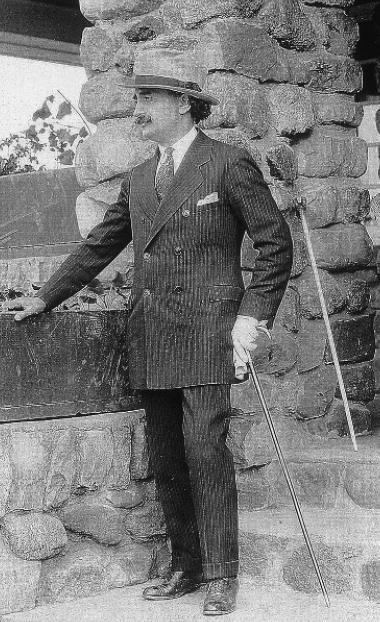Full Name Max A. Rabinoff Name Max Rabinoff | Religion Jewish | |
 | ||
Died April 19, 1966, New York City, New York, United States | ||
Max A. Rabinoff (March 9, 1877 – April 19, 1966) was a Russian-born, naturalized American opera and ballet impresario and international economic adviser. By the time he had become a naturalized U.S. citizen in 1898 he had already started an international import-export company focusing on encouraging American-Russian commerce. By 1908 he had entered the world of performing arts promotion, helping to organize the Chicago Philharmonic Orchestra and the Chicago Opera Company. He is best known for founding the Boston Grand Opera Company in 1914, where he introduced American audiences to Russian ballerina Anna Pavlova and her Russian Ballet Company during his time as managing director from 1914-1917. He also discovered, and soon married, singer Marie La Salle, who died less than two years after their marriage.
Personal life and career
Max Rabinoff was born in Mogilev, in the Russian Empire (now in Belarus) on March 9, 1877. He immigrated to the United States in 1892 and was naturalized in 1898 at the age of 21.
Soon after he became a naturalized American citizen, he founded the American-Russian Importing and Exporting Company, and later established a business to advise the American Government and American companies on trade with Russia and its satellites. During most of his life Rabinoff would be an ardent advocate of economic trade with the Soviet Union.
His first entry into the field of music was in the early 1900s as an employee of the Kimball Piano Company eventually becoming the owner of three piano stores of his own in the Chicago area. In 1908 he left the musical instrument business to organize musical events for the general public. He initiated Sunday Concerts in Chicago and helped organize the Chicago Philharmonic Orchestra and the Chicago Opera Company.
Within two years of entering the music promotion business Rabinoff began to seek out operatic and dance talent both abroad and in the United States. In 1910 Rabinoff presented an opera season for the Mexican Republic's centennial celebration at the invitation of the Government of Mexico. Rabinoff was instrumental in introducing Russian artists to the American public, including Anna Pavlova, the Russian Imperial Court Balalaika Orchestra, and the Ukrainian National Chorus (known then as the Ukrainian Republic Capella). From 1914 to 1917 he was the managing director of the Boston Opera Company featuring Anna Pavlova and her Russian Ballet Company.
During this time Rabinoff married his discovery, the singer Marie La Salle on March 22, 1910. After her death in 1912 he married Helene Gaubert on May 16, 1913, another dancer, who would become known as Helene "Bluet" Rabinoff, after her trademark blue cornstarch eyeshadow. In 1930, after 16 years of marriage, she left Max Rabinoff for Marc Cheftell, a Russian physician.
Continuing his interest in promoting commerce between the United States and Eastern Bloc countries, he attended the Paris Economic Conference of 1916 where he was made economic advisor to the Republics of Estonia, Georgia, and Azerbaijan. He also attended the Genoa Conference of 1922, serving as a liaison between the Russians and Americans, and helped develop the Export-Import Bank of the United States.
His life as musical impresario also continued unabated, and he continued to encouraging young musical talent. He was also interest in popularizing opera with the general public, and in 1942 established the Cosmopolitan Opera Company in New York City in hopes of bringing opera to the public at affordable prices.
Rabinoff took great pains to burnish his image as an impresario. His reputation for flamboyant attire had led a reporter to describe him mockingly as "Tamerlaine" or "Genghis Khan without the turban." He had a fondness for multiple gold rings, raspberry-colored shirts with matching cravats, diamond stick pins, studded cuff-links, and gold chains. His own personal trademark was his fedora, which he always wore outdoors, tilted at a rakish angle. He ceaselessly promoted himself as dandy and man-about-town. As one reporter put it, Rabinoff was "an impresario who looked like an impresario.”
Max Rabinoff died on April 19, 1966 in New York City.
